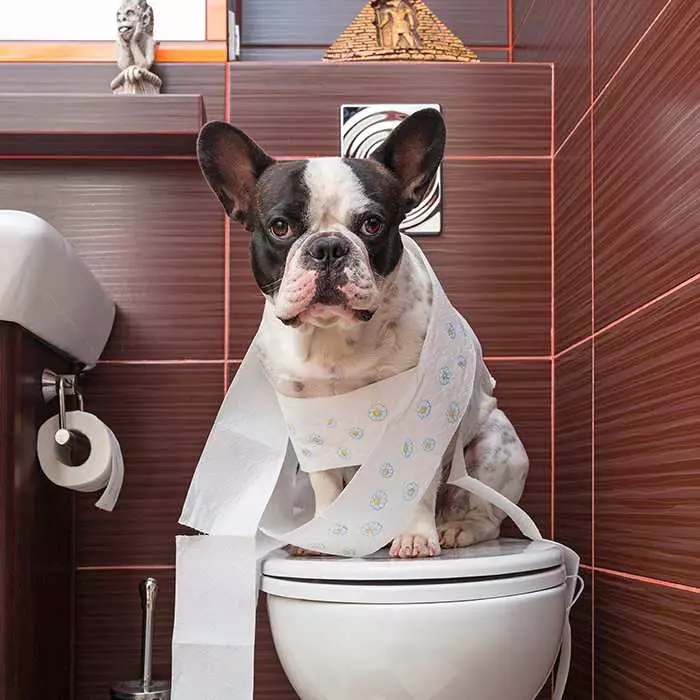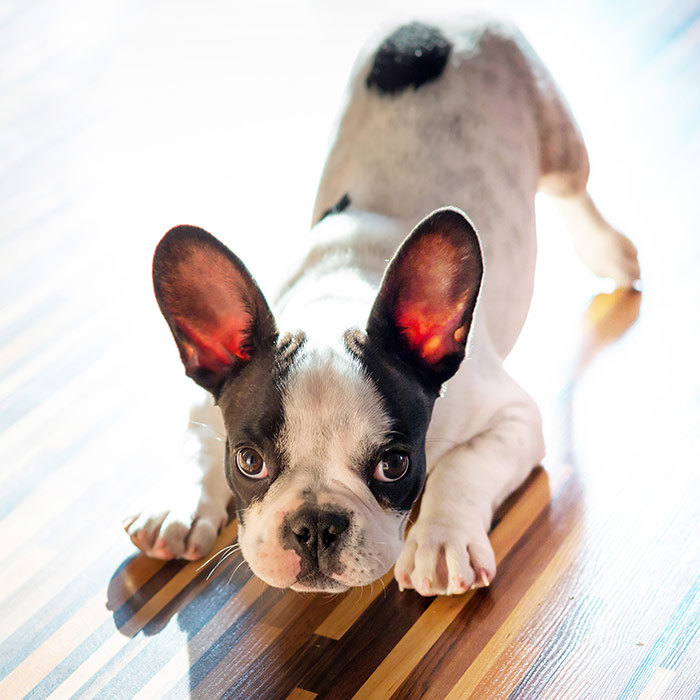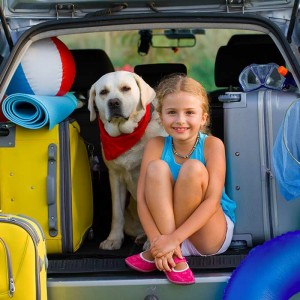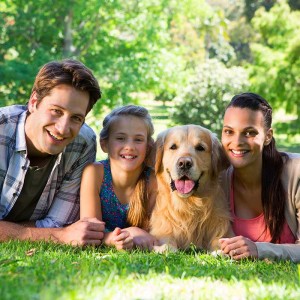Lessons to teach your children about dogs
Your children and your new puppy… getting it right
Kids and dogs (and even dogs and babies) belong together and will often develop extremely close and loving bonds for life. By getting a new puppy you are giving your children a wonderful gift – not just a playmate, but an opportunity to learn about developing responsibility and having respect towards animals. Most of all, you are giving them the opportunity to experience the best gift of all… pure, unconditional love!

Dog safety lessons to teach your children
To give this precious relationship between puppies and kids the best possible start, there are a few simple dog safety lessons you should teach your children about interacting with your puppy. Teaching kids about dogs is so important, as the behaviours they learn now regarding dog safety will also apply when puppy grows up.

Essential dog information for children includes:
- Don’t pat your dog on his head, he prefers a chest or ear scratch. Don’t hug him, most dogs don’t like it and a chest or chin scratch is preferred.
- Don’t pull your dog’s ears or tail or poke his eyes or nose.
- Don’t approach your dog from the back, he could easily get a fright and growl or snap.
- Don’t disturb your dog when he is eating or sleeping.
- Don’t corner your dog or block his flight path.
- Don’t scream loudly and start running away – your dog will see this as an invitation to chase and start nipping.
- Leave your dog alone when it moves away or starts growling.
- Personal play of children and dogs must be supervised, any mouthing during play should be discouraged.
- Don’t give your puppy orders.
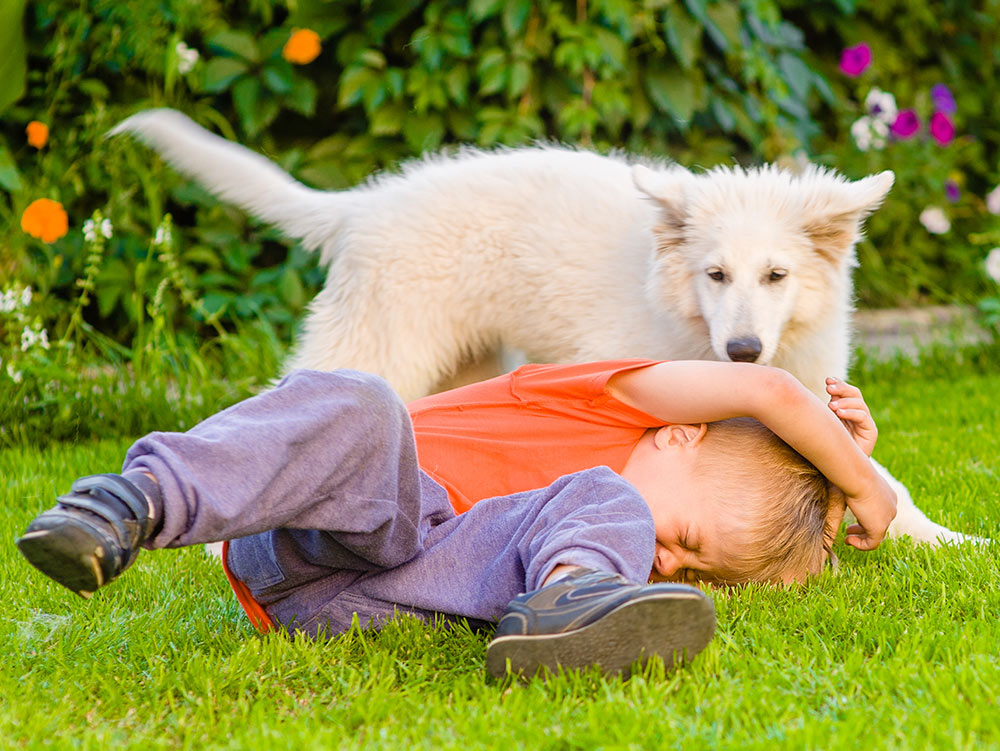
Dogs and babies
Never leave a baby alone with a dog, even a young puppy. Unpredictable infant behaviour could unexpectedly annoy or frighten even the most placid dog occasionally. As your baby gets older and begins exploring with her hands, teach her how to pat your dog gently, without grabbing or pulling at fur, ears or tails. With careful monitoring, dogs and babies can grow from strangers to wonderful, life-long friends and companions.
Puppies and kids
Kids and dogs, especially puppies, can both be wild and show unpredictable behaviour. You don’t want anybody having a bad experience. Dog bites to children often happen in or around the home, frequently from the family dog or a friend’s dog. A child is at greatest risk when playing alone with a dog or while trying to play with a dog that is sleeping or eating.
Even when the utmost caution is being taken, young kids and dogs should not be left unsupervised and we recommend that all interactions between dogs and children under the age of 7 be closely monitored. This means being within arm’s reach and ready to intervene right away if need be; it also means being alert and free of distractions like telephones and TV shows.
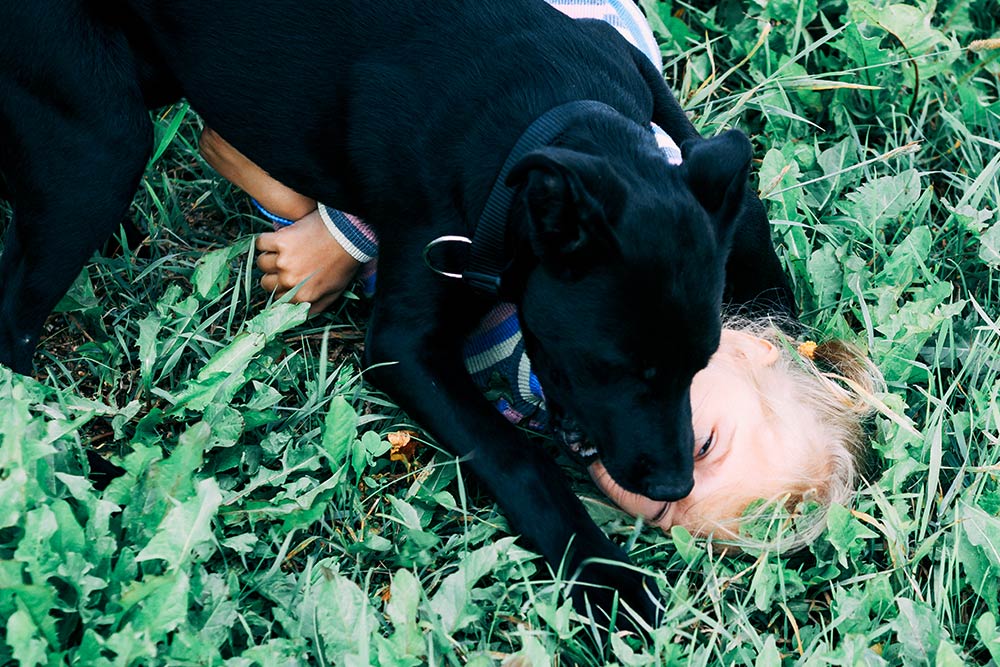
Your puppy needs a safe, quiet place where he can rest and know that he won’t be disturbed. We recommend a playpen or crate that kids don’t have access to. When teaching your kids about dogs, make them aware that your puppy’s quiet place is out-of-bounds for humans of all sizes.
Games for kids and dogs
Both puppies and kids can have seemingly endless amounts of energy. Games for kids and dogs are a great way to expend excess energy and have loads of fun at the same time.
Some popular games for kids and dogs include:
- Fetch a ball – Teach your dog to retrieve the ball and bring it back.
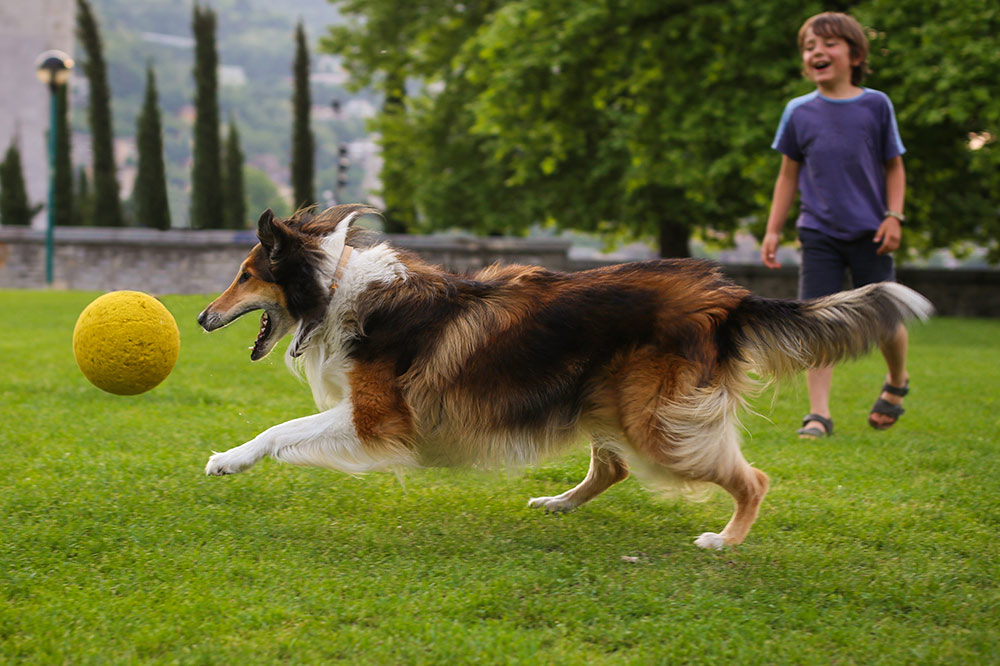
- Hide and seek – One person holds the puppy and the child hides and starts calling the puppy from the hiding place. Start with easy hiding places to make it fun for the puppy and your child. Advance as the puppy’s skills develop over time.
- Blow bubbles – Puppies love chasing and will run after anything when given the opportunity, so give your child some bubbles and let them have some fun.
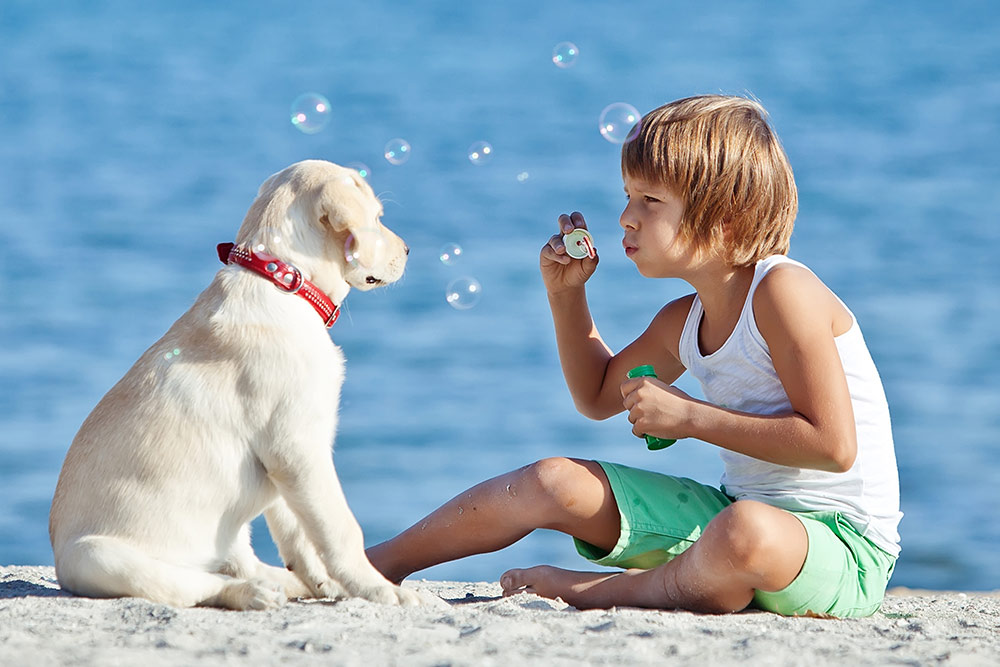
- Tug of War – A fun game for both puppy and child to release some excess energy. Teach your puppy to take the toy by giving him a command like “take it” and also to release it on cue using a verbal command like “give”.
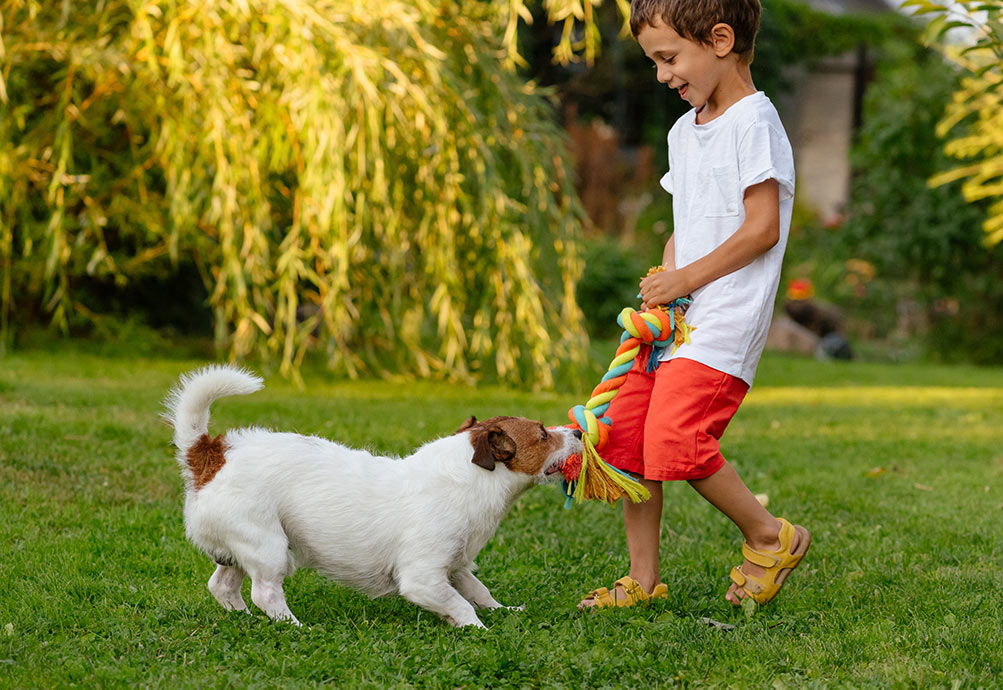
- Home agility – Build an agility obstacle course at home for your kids and dog. You don’t have to buy expensive equipment, just be creative. For example, use chairs and a blanket to build a tunnel or an ironing board over some boxes as a jumping hurdle.
- Teach tricks – A great way to create a bond between dogs and kids is by teaching their puppy some party tricks, like shaking hands, touching their palm or rolling over

Safe interactions between kids and other dogs
Any dog can and might bite a baby or child, even a friendly one. If your child is older than 7 years, we recommend explaining to him/her that whilst their own dog is friendly and loving, not all dogs are like that and you should always ask the owner’s permission before patting another dog.
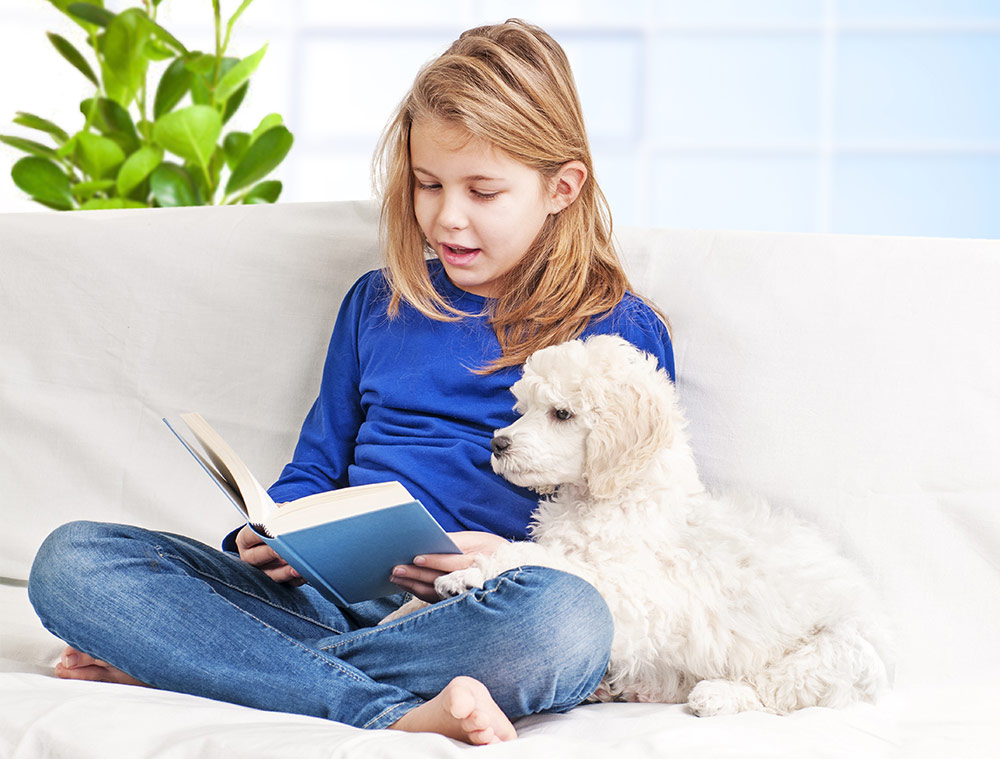
When teaching kids about dogs, it is essential to instruct them how to pat safely (you may need to explain and/or demonstrate this to your child several times), as follows:
- Always ask you (or another carer) first if it’s okay to pat another dog, whether strange or familiar to the child
- Avoid direct eye contact with dogs when moving towards them
- Walk towards a dog and its owner from the front, so they can see you coming
- Stop three big steps away from the dog
- Ask the owner if it’s okay to pat the dog and wait for permission
- Move calmly and slowly towards the dog
- Allow the dog to sniff the back of your child’s hand, which should be curled in a fist with the thumb tucked between the fingers
- Allow your child to gently stroke the dog’s back from its collar towards its tail, avoiding the head and tail (some dogs feel threatened by being patted on the head)
- Do not allow you child to try to kiss a dog or hug around its neck (this places the child’s face close to the dog’s mouth).
Remember to teach them this important dog safety rule: If a dog you don’t know is on its own, then leave it alone. Do not permit your child to approach a dog without its owner being in close proximity.
A note about ‘Child friendly’ dog breeds: It is common for breed descriptions to list a particular breed as being ‘child friendly’. This statement brings some danger with it as child friendliness isn’t determined solely by the breed but more by the environment the puppy grows up in and how well it is socialised with children.




